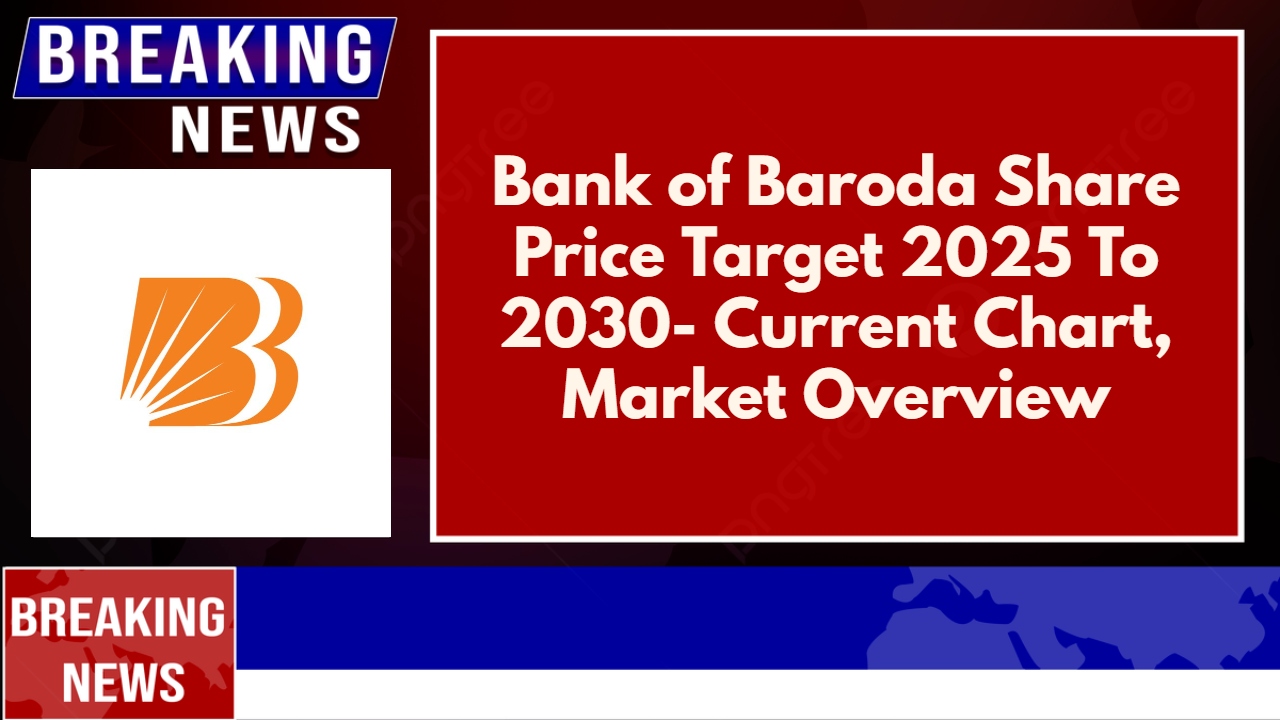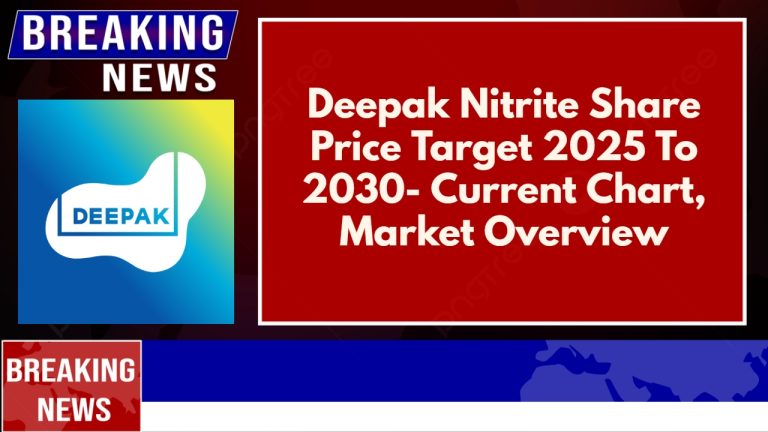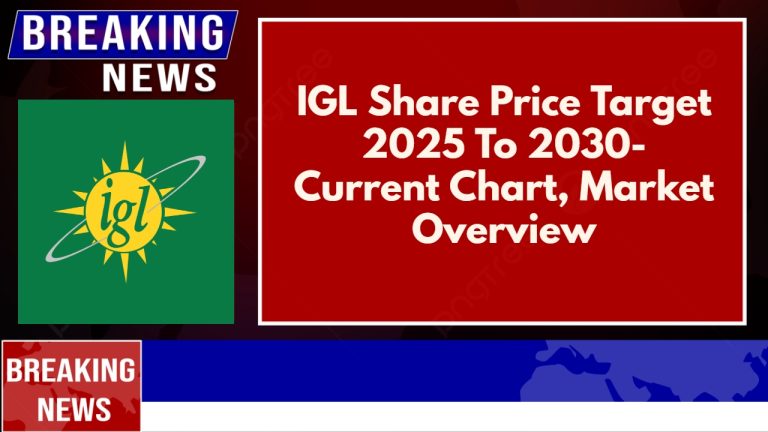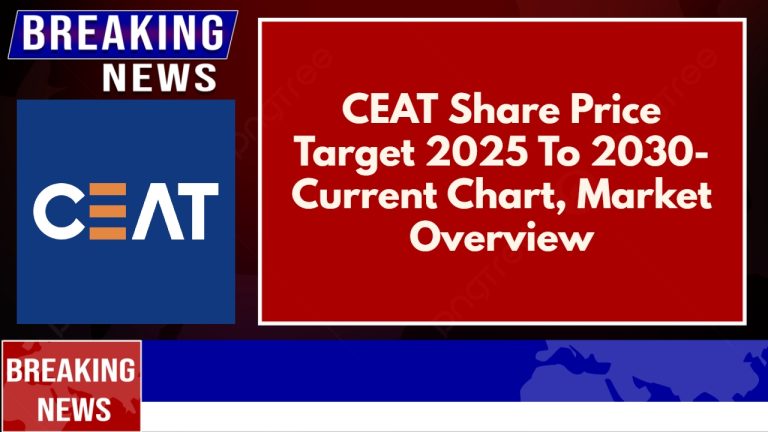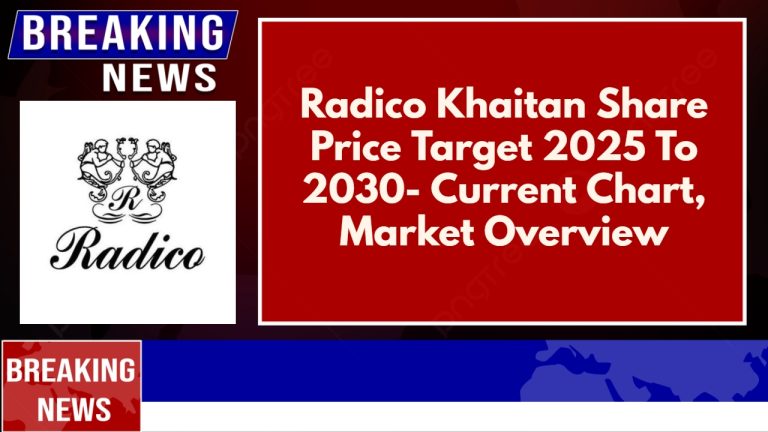Bank of Baroda Share Price Target 2025 To 2030- Current Chart, Market Overview
Bank of Baroda is one of India’s leading public sector banks, known for its strong financial services and customer-centric approach. Established in 1908, the bank has grown into a global institution with a presence in multiple countries. It offers a wide range of banking solutions, including retail and corporate banking, loans, digital banking, and wealth management services. Over the years, Bank of Baroda has embraced modern technology to improve customer experience and enhance its digital banking services. Bank of Baroda Share Price on NSE as of 2 April 2025 is 231.90 INR.
Bank of Baroda Share Price Chart
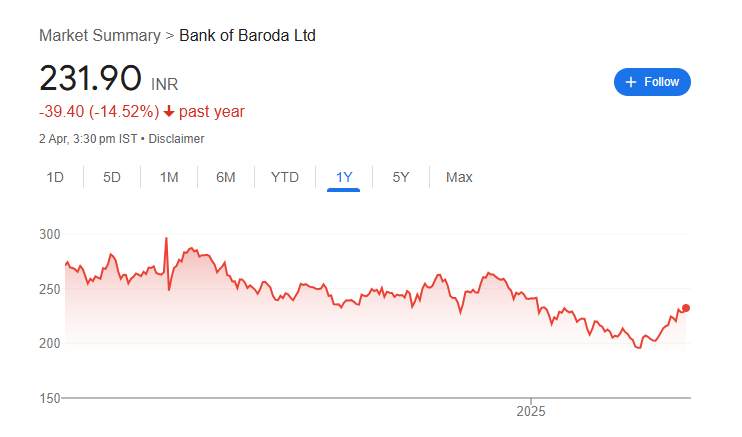
Bank of Baroda Market Overview
- Open: 230.00
- High: 232.67
- Low: 226.31
- Previous Close: 228.58
- Volume: 11,817,603
- Value (Lacs): 27,360.11
- VWAP: 229.58
- UC Limit: 251.43
- LC Limit: 205.72
- 52 Week High: 299.70
- 52 Week Low: 190.70
- Mkt Cap (Rs. Cr.): 119,727
- Face Value: 2
Bank of Baroda Share Price Target 2025 To 2030
| Bank of Baroda Share Price Target Years | Bank of Baroda Share Price |
| 2025 | ₹300 |
| 2026 | ₹340 |
| 2027 | ₹380 |
| 2028 | ₹420 |
| 2029 | ₹460 |
| 2030 | ₹500 |
Bank of Baroda Share Price Target 2025
Bank of Baroda share price target 2025 Expected target could be ₹300. Here are 8 Key Factors Affecting Growth for Bank of Baroda Share Price Target 2025:
Bank of Baroda Share Price Target 2030
Bank of Baroda share price target 2030 Expected target could be ₹500. Here are 8 Key Factors Affecting Growth for Bank of Baroda Share Price Target 2030:
-
Long-Term Credit Growth – Sustainable expansion in retail, corporate, and MSME loans will be crucial for revenue growth.
-
Asset Quality & Risk Management – A continued reduction in NPAs and effective risk management will enhance financial stability and investor confidence.
-
Adoption of Digital Banking & AI – Integration of advanced technologies like AI, blockchain, and fintech collaborations will improve efficiency and customer experience.
-
Regulatory & Government Policies – Supportive banking regulations, financial inclusion programs, and possible government initiatives will impact long-term growth.
-
Global & Domestic Economic Trends – GDP growth, inflation rates, and global financial stability will influence the bank’s performance over the decade.
-
Expansion in International Markets – Growth in overseas banking operations will diversify revenue streams and reduce dependency on the domestic market.
-
Capital Adequacy & Financial Strength – Maintaining a strong capital base and meeting regulatory requirements will ensure long-term sustainability and resilience.
-
Stock Market & Investor Sentiment – Continuous FII and DII interest, along with overall market trends, will affect share price movement in the long run.
Bank of Baroda Shareholding Pattern
| Promoters | 63.97% |
| FII | 8.91% |
| DII | 18.12% |
| Public | 9% |
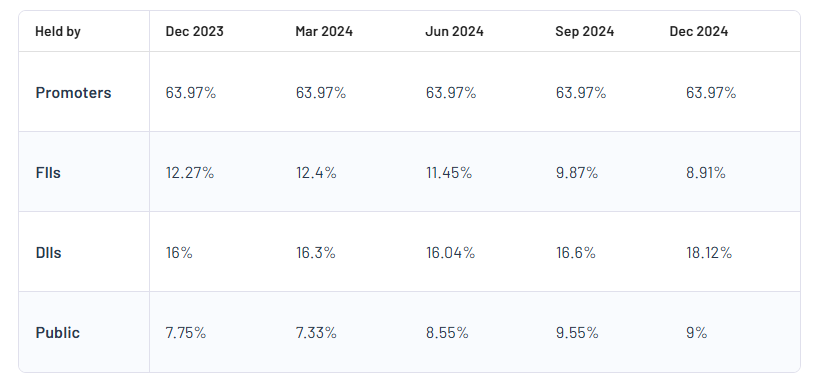
Read Also:- VPRPL Share Price Target 2025 To 2030- Current Chart, Market Overview

